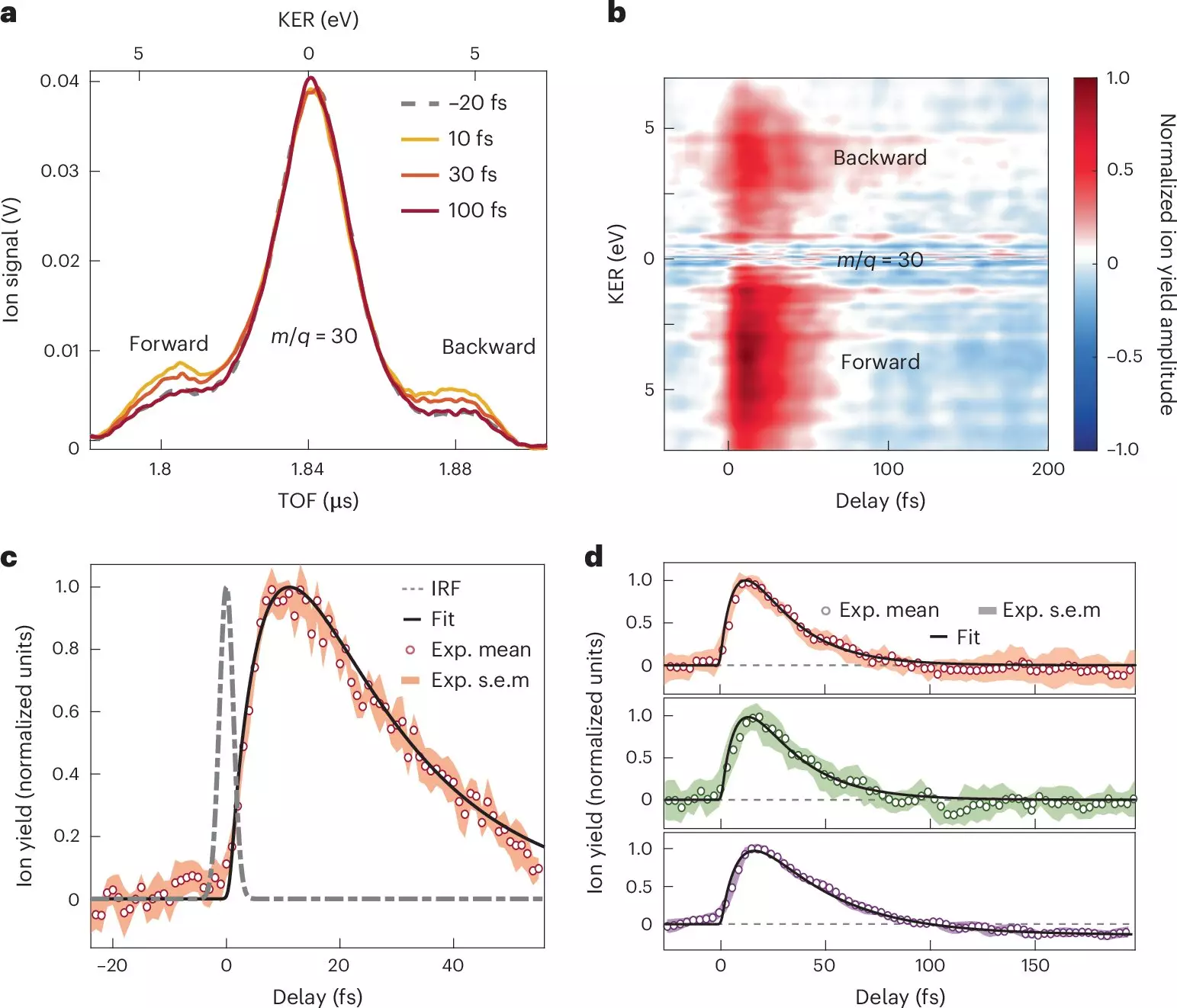In the intricate world of molecular science, the ability to harness light for energy transformation is a profound demonstration of nature’s complexity. Photosynthesis in plants and the photovoltaic effects in solar panels illustrate how energy conversion occurs naturally and artificially. At the core of these fascinating processes lies the movement of electrons, which facilitates charge transfer at the molecular level. Understanding how electronic density is reorganized within molecules upon absorbing light leads to insights into ultrafast dynamics influenced by quantum phenomena. This piece will explore the nature of these processes, recent advancements in measurement techniques, and the implications for future chemical innovations.
The phenomena of electron and charge transfer are both immediate and fleeting, occurring on timescales ranging from femtoseconds (10^-15 seconds) to attoseconds (10^-18 seconds). In this realm, ultrashort pulses generated from high-order harmonic sources and free electron lasers illuminate the rapid responses of molecules to light. These advanced techniques render it possible to witness the immediacy of electron behavior post-photoionization, which is pivotal for a thorough exploration of fundamental physical mechanisms. However, despite substantial progress, significant gaps remain in our understanding of how initial steps in electron transfer manifest following light absorption.
A transformative study conducted by researchers at Politecnico di Milano, along with collaboration from various Madrid institutes, has made notable advancements in the understanding of ultrafast molecular dynamics. Published in *Nature Chemistry*, this groundbreaking work utilizes attosecond extreme-ultraviolet pulses to examine the intricate interplay of electrons and nuclei in donor-acceptor molecules. By focusing on nitroaniline molecules, the research introduces a new dimension to our comprehension of early charge transfer stages with unparalleled accuracy.
The research team has ingeniously merged several sophisticated methods, including attosecond extreme-ultraviolet pumping and few-femtosecond infrared probing, combined with advanced many-body quantum chemistry techniques. This multi-faceted approach allows for the deconstruction of rapid charge transfer events, revealing critical temporal information about how electrons transition through various states. One striking finding showcased in this research indicates that the electron transfer from the amino group in the molecule transpires in under 10 femtoseconds, signaling a synchronized action between electrons and nuclear movements.
What follows this instantaneous transfer is a relaxation phase that stretches over a time frame shorter than 30 femtoseconds, during which nuclear wave packets diffuse across excited electronic states of the molecular cation. This investigation elucidates the vital connections between electron-nuclear dynamics and charge transfer in donor-acceptor systems, particularly in how they react to photoionization.
The results garnered from this study illuminate the specific timelines required for charge transfer within the molecular framework, particularly between donor units and adjacent chemical bonds, such as those linking to benzene rings. The authors posit that these findings offer a clearer understanding of conventional diagrams and models used to qualitatively depict charge migration in organic molecules. The implications of this research extend beyond academic enrichment; they hold the potential to revolutionize how we approach the design and optimization of molecular systems for energy applications.
The significance of this research cannot be understated as it sets a robust foundation for ongoing exploration within the field of attosecond science. As scientists continue to unveil the complexities of molecular interactions at such rapid timescales, the insights gained could catalyze progress towards practical applications, culminating in innovative energy solutions. The pursuit of deeper understanding in the electron dynamics will undoubtedly inspire new methodologies and technologies that enhance our ability to manipulate and harness energy efficiently.
The convergence of experimental innovation and theoretical insight offers a promising horizon for future developments in molecular chemistry and physics, illuminating the path for new energy transformation techniques that marry efficiency with an intricate understanding of the fundamental forces at play.


Leave a Reply